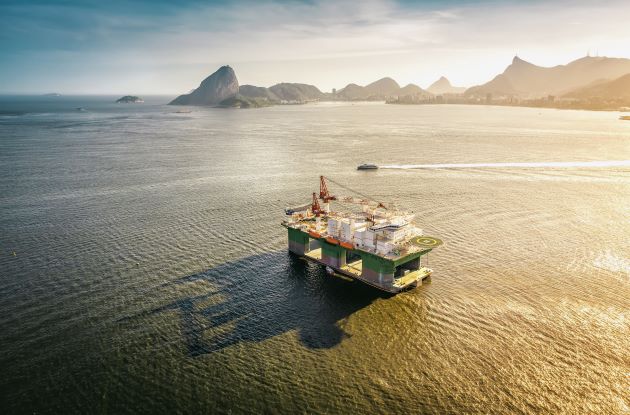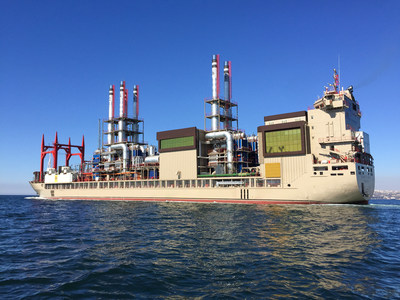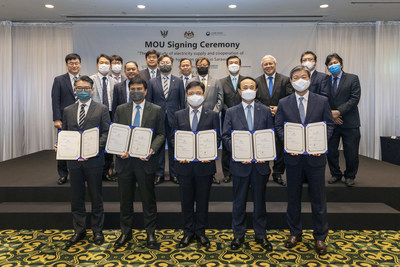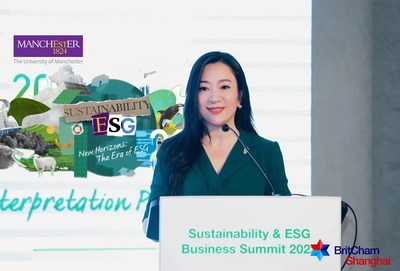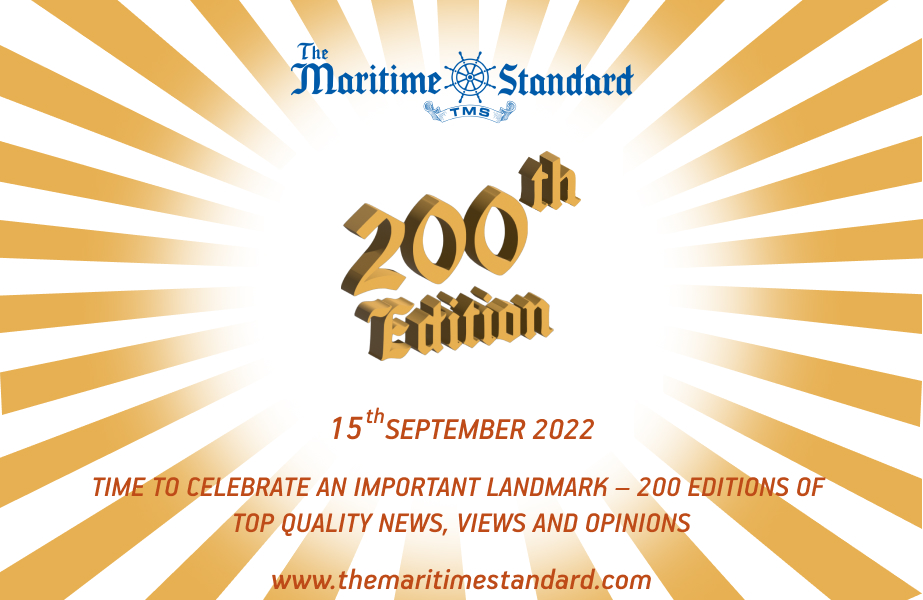The "Exponential Roadmap for Natural Climate Solutions" pinpoints actions needed to turn land sector from 12 Gt greenhouse gas source today into 10 Gt carbon sink by 2050
To avoid catastrophic climate change, the land sector – including agriculture, forestry and natural land protection and restoration – must reach net zero emissions by 2030, according to new research from Conservation International.
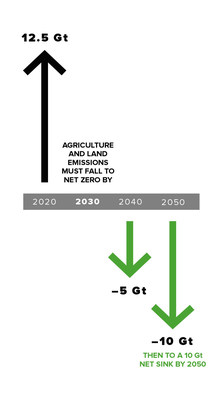
The research is part of a new report, "The Exponential Roadmap for Natural Climate Solutions," released by Conservation International and partners Potsdam Institute for Climate Impact Research, WWF, and the Exponential Roadmap Initiative and that lays out a new benchmark: the "Carbon Law for Nature." Rooted in the latest climate science, this benchmark states that everyone with a land sector footprint – particularly companies, banks and governments – must reach net zero emissions by 2030 and collectively achieve a 10 gigaton (Gt) carbon sink by 2050 across that footprint.
Currently, the balance of greenhouse gas emissions and carbon sinks from the land sector emits a net total of about 12 Gt of greenhouse gases into the atmosphere each year that must decrease – then reverse – by 2050.
"If you aren't on this trajectory, then you aren't doing your part to keep climate warming as close to 1.5°C as possible," said Michael Wolosin, managing director of the Natural Climate Solutions Roadmap at Conservation International.
Meeting this benchmark is well within reach. Soils and plants could sequester much more carbon than they already do, helping to close the massive gap between global carbon emissions and storage.
Improved agricultural and forestry practices, the report states, present significant opportunities for absorbing climate-warming carbon out of the atmosphere while at the same time supporting local economies by offering sustainable livelihoods. Notably, the report details a timeline for who, how and where is best suited to maximize the potential of these "natural climate solutions" – that is, nature-based initiatives that better protect, manage and restore natural and working lands.
"To keep the 'safe' climate limit of 1.5°C warming within reach, we need major investments in natural climate solutions – in addition to rapidly phasing out coal, oil and gas," said Johan Rockström, Conservation International chief scientist and director of the Potsdam Institute. "Even if energy and industry meet their climate mitigation targets, without urgent action in the land sector we will not be able to limit warming. These solutions aren't reliant on hypothetical technologies or risky geoengineering. In most cases, it's about rapidly scaling practices that have been known for centuries."
Bolstering land protection, restoration and management efforts by changing the way the world grows and consumes food is essential, the report finds. About 80% of the climate mitigation opportunity from the land sector in the next decade will depend on transforming agriculture, diets and food waste. Protecting healthy ecosystems and avoiding deforestation from agricultural expansion is especially important; these efforts represent 30% of the 2030 natural climate solution mitigation opportunity.
That 80% also includes improving agriculture practices on existing farms by cover cropping, reducing tillage and implementing smart agroforestry practices such as planting trees along edges of pastures and commercially harvested areas. Finally, it includes reforestation that will not be spatially possible without sustainably using existing working lands, which means limiting food waste and transitioning to healthier diets.
"Food system transformation is at the heart of climate action. Nearly 80% of natural climate solutions necessary to achieve a 1.5°C future are closely linked to food systems and we must urgently work to put food on the table of both international and national agendas," said Brent Loken, global food lead scientist at WWF. "But given that food systems vary dramatically between countries, the strategies and policies needed to shift to a more sustainable food future must also differ between countries."
"Leveraging natural processes that pair traditional knowledge with modern science can improve growing conditions, soil fertility and help control weeds and pests," said Starry Sprenkle-Hyppolite, Conservation International restoration science director. "There are proven ways to simultaneously maintain vital food yields and practice climate-friendly agriculture."
The report finds that improved management of agricultural land through the action of farmers and ranchers, supported by governments, businesses and the finance sector, can achieve more than 5 Gt of total carbon sequestration by 2030 – 90% of which is newly removed from the atmosphere; 10% is reduced emissions of methane and nitrous oxide annually. These actions include:
- Climate-smart grazing practices such as adding trees to grazing lands can provide 1.9 Gt of emissions mitigation and improve animal health and economic opportunities for livestock mangers.
- Changes in soil management using regenerative practices like cover cropping, reducing tillage and mulching crop residues can add up to enormous carbon sequestration if achieved at scale, creating more than 2.5 Gt in carbon sinks globally by 2030 in regions with modern industrial agriculture such as North America, Europe, China and India.
- An additional 2.5 Gt mitigation opportunity by 2050 is possible if 50% of the world's population chooses a healthy and sustainable diet – which means shifting diets in richer countries toward plant-based foods – while also cutting food loss and waste in half.
Additional highlights from the report:
- Indigenous land rights are essential to land stewardship. Expanding resources and legal recognition of Indigenous peoples and local communities could reduce nearly 1 Gt of annual emissions by 2025 and nearly 2 Gt by 2050.
- Expanding and creating "climate-critical" protected areas that contain much of the world's at-risk "Irrecoverable Carbon" – particularly in the Amazon, Congo Basin and Malay Archipelago – would add another 1 Gt of mitigation per year by 2030.
- Climate-smart forestry practices hold huge potential, especially for Brazil, Suriname, Gabon, Indonesia and the United States. Globally, climate-smart forestry could produce nearly 2 Gt of mitigation per year by 2030 on 1.3 billion hectares (65%) of the world's timber-producing natural forests.
- Southeast Asia, parts of Eurasia, Brazil, the United States, Canada, Indonesia and India are well positioned to apply restoration solutions – leading a global effort to restore 15 million hectares of peatlands by 2030 and up to 350 million hectares of forests and wetlands by 2050, delivering nearly 5 Gt of reductions annually.
"In the hierarchy of natural climate solutions protection is still a top priority, but it must be paired with other strategies," said Bronson Griscom, a report contributing author and vice president of natural climate solutions at Conservation International. "For consumers in industrialized countries that means healthier diets. For farmers and foresters that means adopting advanced practices, with new financial support. And for Indigenous peoples it means justice, more rights and resources. These efforts all have one thing in common: For all of us they mean regreening the planet."
This report builds on the work of the Exponential Roadmap Initiative. Learn more about the Natural Climate Solutions Roadmap or access the full report.


